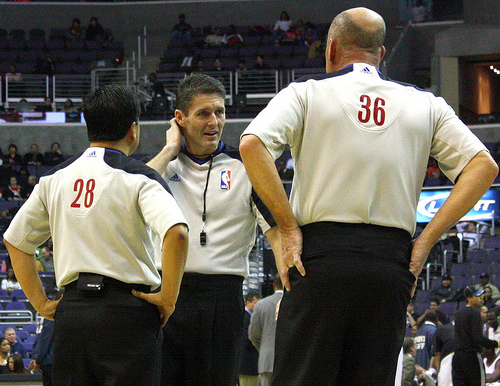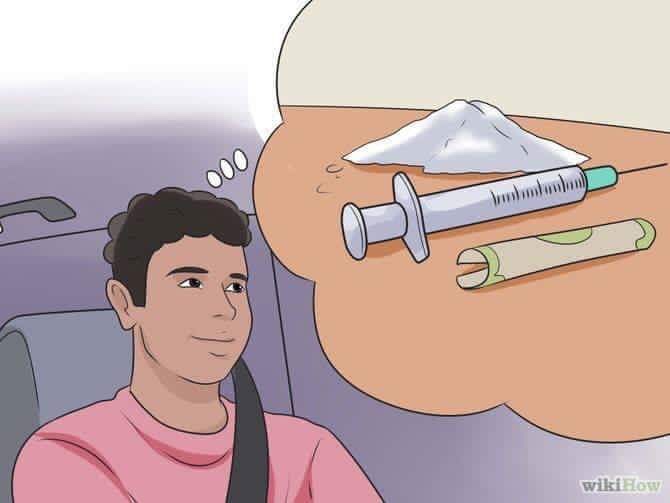The refs are the real winners.
Draymond Green: Raptors 'wouldn't have stood a chance' vs. healthy Durant – Sportsnet.ca
Nearly 12 months later, Green is adamant that the Warriors would’ve won their third straight championship with a healthy Durant.
“[Toronto] wouldn’t have stood a chance if Kevin didn’t get hurt,” Green said on Showtime’s All The Smoke with former NBA players Matt Barnes and Stephen Jackson. “Kevin don’t get hurt — you seen the game he came back in Game 5, I looked up, it was like six minutes to go, we had like 40 points in the first quarter.”
Durant had 11 points in 12 minutes in Game 5 before he was hurt. The Warriors also lost Klay Thompson and Kevon Looney to injuries during the Finals, with the likes of DeMarcus Cousins, Steph Curry and Andre Iguodala injured at different stages during the 2019 post-season.
Durant eventually left the Warriors via free agency and signed with the Brooklyn Nets last July. He has yet to play a single minute with his new team because of the Achilles injury.
The Big Winners of Sports Without Fans: The Refs – WSJ
For decades the question of home-court advantage has pulled at researchers, but only recently have they discovered that it’s largely a function of psychology. In their 2011 book “Scorecasting,” Toby Moskowitz and L. Jon Wertheim presented compelling evidence that it’s mostly a matter of referee bias. In a world without fans, that bias might decrease. “I suspect they will make much fairer decisions,” said Moskowitz, a Yale economist.
This makes sense. Imagine you worked for a company that invited thousands of strangers to heckle you relentlessly all day every day, so much that it became part of your routine. But then one day, the office bans them. Would you get better or worse at your job?
There are some people who might not let these scholarly findings past their peer review: the referees themselves.
“I think the fans actually believe they have influence,” said retired NBA official Joey Crawford, “and we as referees know that they don’t.”
There are few people on earth with a better understanding of referees. In the past 25 years, nobody officiated more NBA Finals games than Crawford, whose father and brother were both Major League Baseball umpires. On this matter, he is adamant.
“It’s a total fallacy,” he said. “I know referees, and I know what we talk about, and I know what permeates our profession. Nobody ever talks about the fans.”
But not many officials know what it’s like to call big-time games without tens of thousands of screaming lunatics in their ears. Which is where a couple dozen Italian soccer refs come in.
Their performances before empty stands in 2007 delivered the key finding of the Swedish economists’ study: Referee bias, the biggest factor in home-field advantage, all but disappeared in games behind closed doors.
“Soccer referees are supposed to be neutral,” they wrote. “Yet we find evidence that Italian referees change their behavior in games played without spectators.”
What might happen in sports over the next few months is what researchers call a natural experiment. Every stadium becomes a laboratory, every game a juicy set of data and every athlete a subject with strong incentives. “If they do play a bunch of games without fans,” Moskowitz said, “for sure people are going to gather the data.”
Pettersson-Lidbom and Priks took their first shot at such a study when the chance fell into their lap simply because they followed soccer news. The incident that turned Italy’s Serie A into a behavioral economics simulation began when Catania met Palermo for an all-Sicilian grudge match in 2007.
The rivalry was so tense that more than 1,000 police officers were deployed to the stadium before kickoff. But midway through the game, gas, rocks and flares rained down anyway. The players fled the field and a policeman was killed in the ensuing riot. Italian soccer authorities imposed an unprecedented measure: matches without fans. Priks called it the perfect “exogenous shock.”
He suddenly had two dozen top-shelf soccer games in empty stadiums to study how much of the refs’ behavior was caused by “social pressure” from being surrounded by hooligans with gas, rocks and flares.
In most soccer matches, their study found, home-field advantage holds true. The referees call fewer fouls and give fewer yellow and red cards to the home team. But not in the Italy sample. “These effects are quite substantial,” the economists wrote.
Raptors Classic Podcast: Oliver Miller blocks MJ as Raptors upset 72-win Bulls
Welcome to Raptors Over Everything, a Yahoo Sports Canada podcast covering the latest developments regarding the Toronto Raptors. Find the show on iTunes, Spotify, and Stitcher.
Host William Lou reacts to an unforgettable classic, where the expansion Raptors upset the 72-win Chicago Bulls by a score of 109-108 on March 24, 1996.
Three stars: Damon Stoudamire, Oliver Miller, Doug Christie
Gerald Henderson award: Steve Kerr
Featuring: Zarar Siddiqi of Raptors Republic
The full game can be seen here:
Ma Fuzzy's back for another round of his hit show 'How talented are you?' today at 2pm. #NBATogether https://t.co/hVefgBIYgN pic.twitter.com/wVFsokFAXv
— Toronto Raptors (@Raptors) April 23, 2020
Real Sports Network: How the Leafs and Raptors nearly created a TV ‘powerhouse’ – The Athletic
When Quinn was head coach, the channel carried all of his news conferences live, from the moment he stepped behind the lectern until the moment he left. Depending on his mood, Quinn would be on the air for a half-hour at a time.
“That was the best content we could ever create,” Shannon said. “Pat loved it and we loved it.”
The channel started carrying a handful of live games.
“We became a factor in the marketplace,” Shannon said. “That was our largest goal, to be part of the question: ‘Is (the game) on CBC? Is it on Sportsnet? Is it TSN? Or is it on Leafs TV?’”
Shannon left the company in 2006, and the expansion plans started leaking out to the public five years later. There were models to follow in the United States, where regional powers in Boston (NESN) and New York (YES) were already established.
Peddie, along with Tom Anselmi, his chief operating officer, hired Ed Desser, a ranking executive at the NBA who became a leading sports media consultant. His arrival was seen as a signal of how serious the company was about its plans.
“We started really looking at, ‘what could we do?’” Peddie said. “And we said, ‘well, shit.’”
By 2011, they already had a brand in place. Real Sports Bar & Grill opened a year earlier and was soon named “North America’s Best Sports Bar” by ESPN. They also had a stable filled with sports teams.
When existing rights deals with the networks had expired, Peddie said MLSE would have been able to offer 52 regional Leafs games, as well as 70 Raptors games. There were two dozen Toronto FC games and all the Marlies games.
They would have removed entire blocs of programming from TSN and Sportsnet. The Leafs would still have been on the CBC on Saturday nights, but the rest of the week would have belonged to MLSE.
“Pretty powerful,” said Peddie.
There would also have been some powerful risk factors to consider. A Canadian broadcast insider who requested anonymity suggested networks would not usually generate a profit on a regular-season Leafs game. If a network paid $1-million for the right to carry a regional Leafs game — on top of what it cost to produce the game — it could not expect to generate enough advertising to cover the expense.
The money was in the subscriber fees, which the networks negotiate with the cable companies.
Would Peddie, who had just pulled the Leafs rights away from Bell and Rogers, have received an easy time at the negotiating table for his new channel? Probably not, according to the source.
There would also be production costs, which had typically been covered by the networks. There would also be advertising expenses, with MLSE having to promote not only its channel, but also its teams.
O’Neill was brought in because he had a reputation as a top-notch defensive mind. He’d spent the previous two years on the bench of the Detroit Pistons, and before that a year with the New York Knicks — three teams that all were top-10 in defense.
To O’Neill’s credit, the Raptors were better — both overall, where they added nine wins, and on defense where they soared to seventh overall. It was the highest ever mark in team history to that point.
The problem was on the other end. Toronto dipped to the second worst offense in the NBA, scoring at a rate lower than any team in Raptor’s history — including the inaugural expansion model.
O’Neill had his team play slow, with the Raptors ranking 27th in pace. They also never got to the line — finishing 29th in free throw attempts — which is indicative of teams that are rarely on the fast break, and who take a lot of late-clock shots when opposing defenses are most effective.
In short, it is a style befitting a team that feels it is operating at a severe talent gap and has to gunk up a game to compete.
Given the Raptors opened the season starting an “end-of-career” Antonio Davis, a “one-foot-out-the-door” Vince Carter, Jerome Williams, Alvin Williams, and Michael Curry, and whose top reserves, by minutes, were: Milt Palacio, Lamond Murray, Morris Peterson, and a rookie Chris Bosh — this strategy makes some sense.
If that was the totality of the O’Neill experience, even with his highly unpleasant personality, I probably could have shrugged it off. But that wasn’t the totality of the Kevin O’Neill experience.
Not by a long shot.
On December 1st, 2003, then-GM Glen Grunwald, realizing his 8-8 team needed a boost, traded Davis, Williams and Chris “Practice is too early” Jeffries for Jalen Rose, Donyell Marshall and Lonny “Meathooks” Baxter. (Side note: While Masai Ujiri is the greatest executive in Raptors’ history, Glen Grunwald was really, really, good at the job too.)



